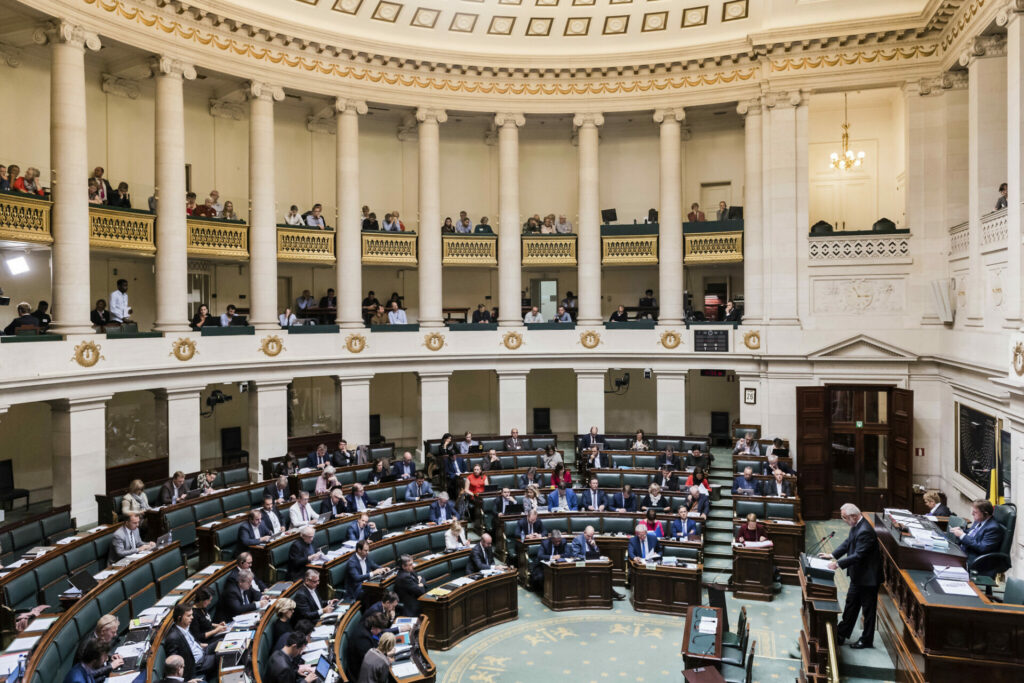Belgium and the EU suffer from a similar democratic deficit: political parties are addressing electorates that correspond to only a subset of the relevant populations. Last May, the European Parliament took an important step towards removing this deficit. How much progress has there been on the Belgian front?
Philosopher Philippe Van Parijs reflects on current events and debates in Brussels, Belgium and Europe
In 1899, Belgium adopted a proportional electoral system with party lists competing in territorially defined constituencies. It was the first country in the world to do so and was soon followed by many others. The country was then divided into a number of constituencies and, in the following seven decennia, the main political parties presented lists in every one of them. But in the 1970s, they all split up along the linguistic cleavage. As a result, two distinct electoral arenas developed side by side.
Today, only Dutch-language parties field candidates in Flanders, and only French-language parties in Wallonia. There is, therefore, no electoral incentive to please the other linguistic community. This is reflected in the parties’ programmes and promises, in their media presence and electoral campaigns. Yet the Belgian Constitution requires Dutch- and French-language parties to form the federal government together. No wonder, therefore, that the formation of a new federal government can often take many months.
In February 2007, the Pavia Group, a group of academics from all Belgian universities, made public a proposal that aimed to put an end to this unhealthy situation, not by forcing political parties to reunite, but by inducing them to address all Belgian citizens. For this purpose, it proposed to allocate 15 of the 150 seats in the federal Chamber to a constituency covering the whole country. Candidates would be allowed to stand simultaneously in the federal constituency and in one of the eleven provincial constituencies.
Allowing such a double candidacy is needed to guarantee that all candidates with an appeal beyond their own province — in particular all party leaders — would be very likely to stand in the federal constituency and thereby place themselves in a position in which they could be electorally sanctioned — both positively and negatively — by citizens living anywhere in the country they wanted to govern.
The idea of a federal constituency was the subject of a hearing in the federal parliament in 2014. From the beginning, it has been consistently backed by liberal and green politicians, both Flemish and Francophone, as well as by the bilingual far-left party PTB-PVDA. Former prime ministers Guy Verhofstadt, Herman Van Rompuy and Elio Di Rupo expressed their support for it, as did the current prime minister Alexander De Croo. Most recently, in May 2022, the leader of his party (VLD, the Flemish liberal party), submitted to the federal Chamber a parliamentary bill that would create a federal constituency of twenty members.
Is the end in sight? Not quite. The introduction of a federal constituency requires a revision of the constitution, and a revision of the constitution, however small, demands a two-thirds majority in both houses of the federal parliament. Such a majority is only achievable with the support of Belgium’s largest party, the Flemish nationalist N-VA.
Out of the question? Not really. Some of its leaders have indicated that they might consider such a reform if — contrary to what the Pavia Group proposed — the proportion of Dutch- and French-speaking candidates elected on the federal constituency is not fixed in advance. And the current Flemish minister-president Jan Jambon (N-VA) may in due course remember that, when he was federal vice-premier, his popularity overtook that of the then Walloon minister-president Elio Di Rupo.
The prospects for a Belgium-wide electoral constituency may also be helped by recent developments at EU level. Inspired by similar considerations, the idea of “transnational lists” for the European Parliament has been around since the late 1990s. After several failed attempts, a proposal for an EU-wide electoral constituency of 26 seats was adopted by the European Parliament in May 2022, with a comfortable majority. What made this possible? And how likely is it that we shall have a federation-wide constituency at EU level before we have one in Belgium? Answers next time…

